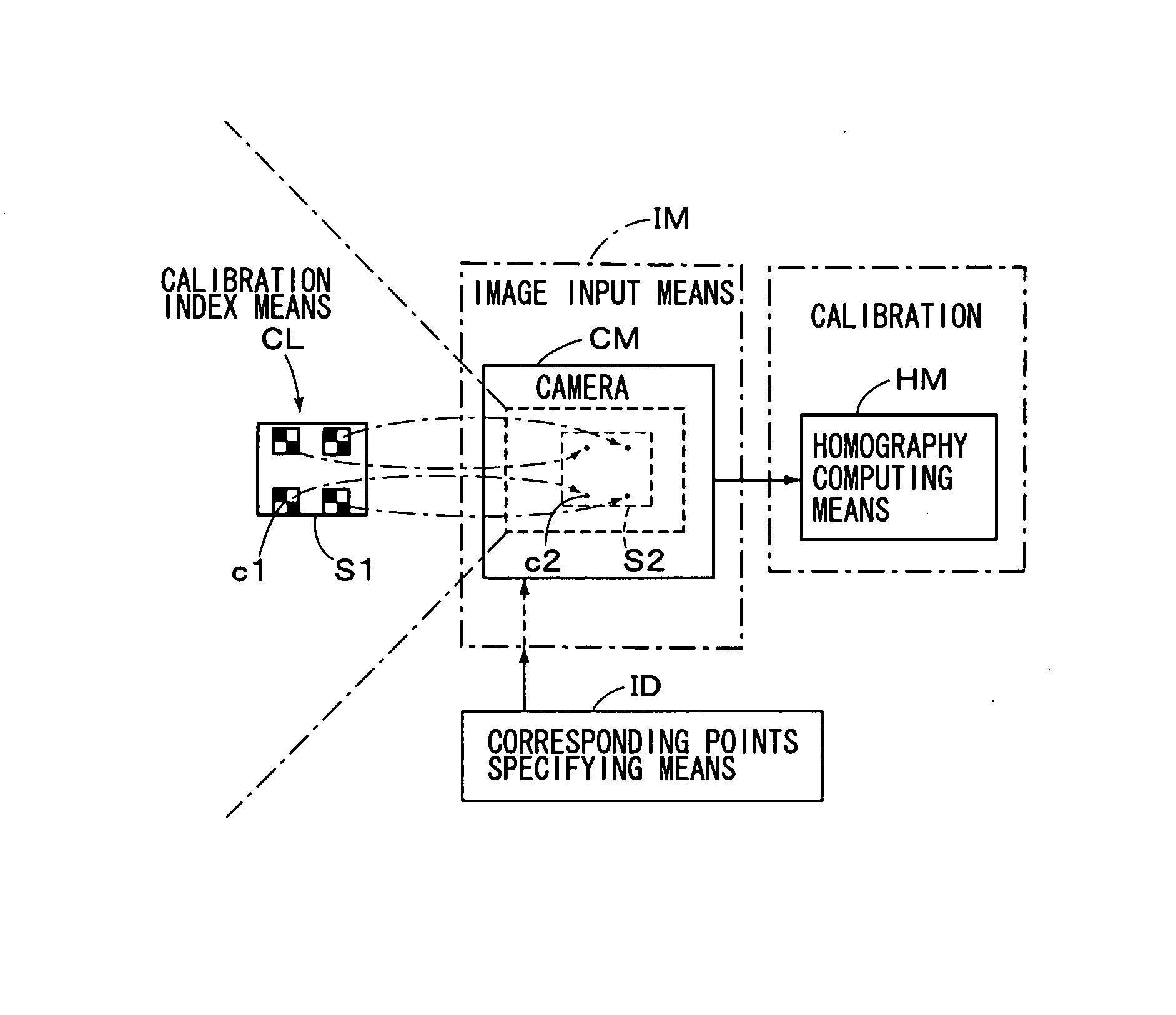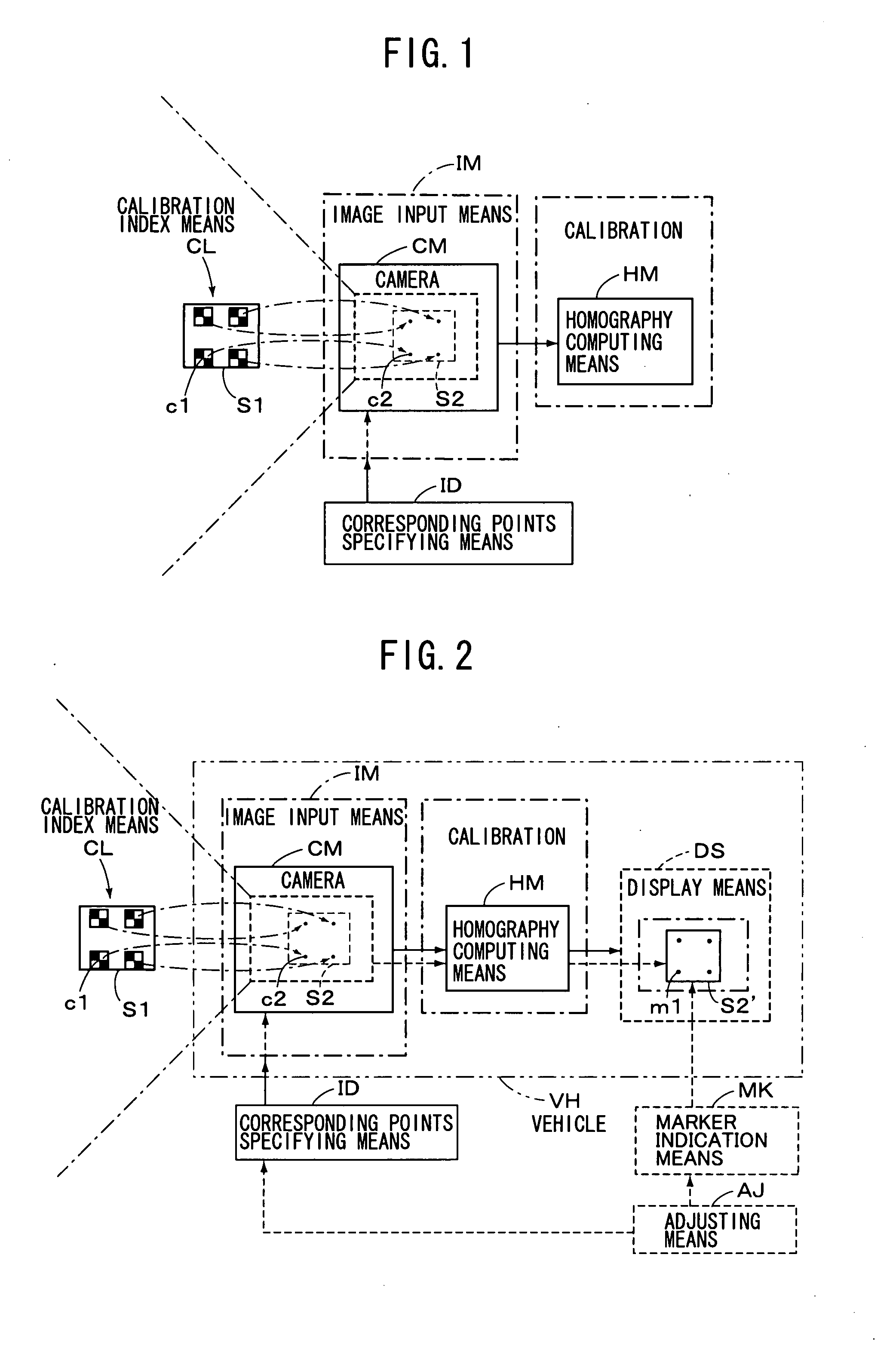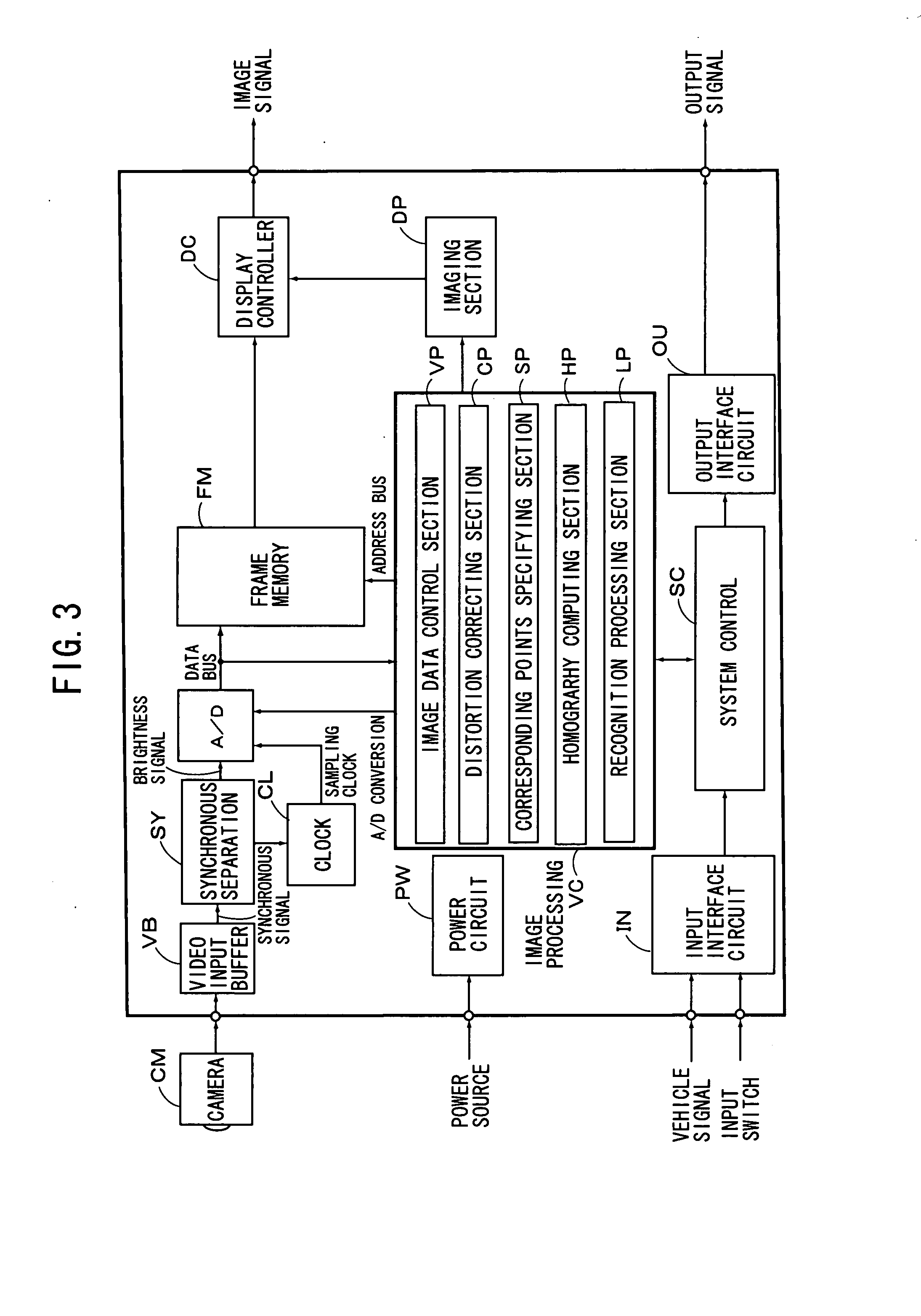Camera Calibration Method And Camera Calibration Device
- Summary
- Abstract
- Description
- Claims
- Application Information
AI Technical Summary
Benefits of technology
Problems solved by technology
Method used
Image
Examples
Embodiment Construction
[0054] A practical embodiment of the camera calibration method of the present invention as constituted above will be explained hereinafter with reference to the drawings. First of all, a camera technique provided as a background of the present invention is explained referring to FIGS. 17-20, thereafter the embodiment of the present invention will be explained referring to FIGS. 1 and 2. At the outset, a camera coordinate system is defined as shown in FIG. 17. That is, as explained in the Non-patent document 3, an optical center (C) of a camera is provided as an origin of coordinates, X-axis and Y-axis of 3D coordinates are provided to be in parallel with x-axis and y-axis on the image plane, respectively, and z-axis is provided to be in parallel with an optical axis (l0). The straight line (l0) drawn from the optical center (C) perpendicularly to the image plane π is called as an “optical axis”, and a point of intersection (xc) of the optical axis and the image plane is called as a ...
PUM
 Login to View More
Login to View More Abstract
Description
Claims
Application Information
 Login to View More
Login to View More - R&D
- Intellectual Property
- Life Sciences
- Materials
- Tech Scout
- Unparalleled Data Quality
- Higher Quality Content
- 60% Fewer Hallucinations
Browse by: Latest US Patents, China's latest patents, Technical Efficacy Thesaurus, Application Domain, Technology Topic, Popular Technical Reports.
© 2025 PatSnap. All rights reserved.Legal|Privacy policy|Modern Slavery Act Transparency Statement|Sitemap|About US| Contact US: help@patsnap.com



